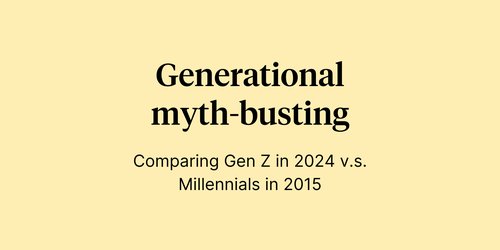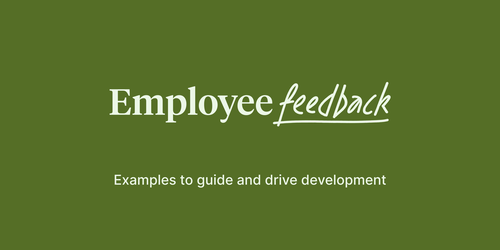
What is performance management? A comprehensive guide

Traditionally, employee performance is managed using a backward-looking, review-based system in which a manager periodically evaluates whether or not their direct report is meeting performance expectations. In each review cycle, the manager follows up with a direct report to assess their performance over a set period of time and understand their progress toward their professional development goals. This is then used to determine whether the individual will receive a promotion, remain in their current role, or need to make any necessary changes to boost employee performance.
What’s missing from this approach is a humanizing, development-focused lens that considers how well an employee could perform with proper guidance and resources. Building a performance management process that promotes growth and high performance among your employees is extremely difficult without this perspective.
While workplaces have made progress in addressing factors that affect performance, such as burnout and wellbeing, many leaders still place too much emphasis on the past and use negative reinforcement to extract good performance.
It’s time to rethink this approach – instead of reprimanding employees when things aren’t going well, consider how you can empower your workforce to hone their skills and, as a result, better support employee engagement and development.
In this guide, we’ll outline a new approach to performance management and share everything you need to know, including best practices and resources for empowering your employees to meet expectations and adopt a growth mindset for ongoing development.
What is performance management? Defining key processes and goals
Let’s start with the biggest question: What is performance management? In HR, performance management describes the process in which managers provide feedback to direct reports with the goal of ensuring an employee’s performance matches the organizational goals.
While many people associate performance management with annual performance reviews, it actually consists of multiple processes that don’t simply measure performance but also contribute to employee development.
Performance is a fluid state, and your performance management process should be just as flexible. Rather than viewing an individual as an inherently low or high performer, it’s helpful to see every employee as moving along the spectrum of “high-performing” and “low-performing.” The difference? This approach takes into account how well you support their growth and development. With a growth mindset, employees can better develop their abilities, skills, and performance.
Before delving deeper, let’s take a step back and define two key concepts:
- Performance measurement retroactively evaluates and quantifies employee performance over a given time frame. It’s often associated with a traditional, once-a-year performance review from the top down (i.e., manager to direct report performance appraisals).
- Performance development, on the other hand, looks forward. It aims to enable future performance by encouraging employees to build on their strengths while also taking action on their areas of opportunity.
The chart below further compares the two concepts.
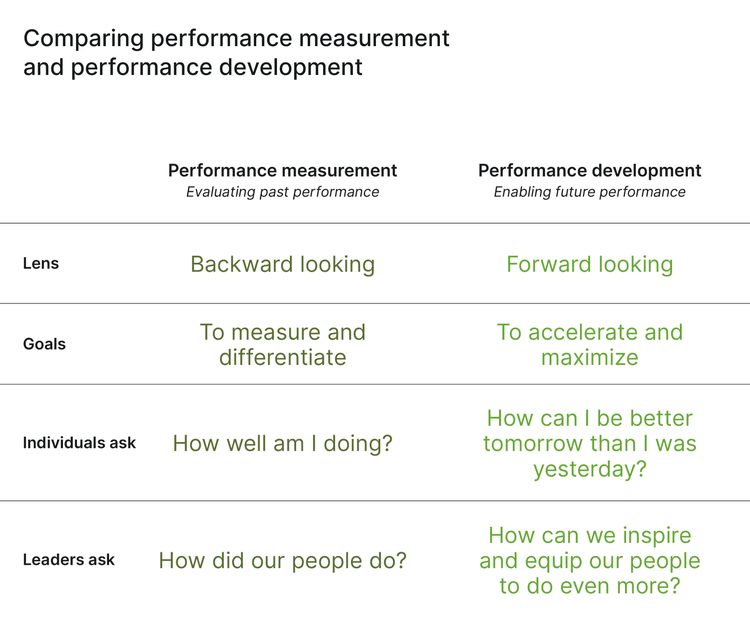
As illustrated above, performance measurement and performance development are highly complementary – though these two processes should still be kept separate. Unfortunately, as it currently stands, performance management is among the most feared and dreaded core people processes. Only one in four companies say their performance management systems are effective and according to recent Gallup research, only 2% of CHROs from Fortune 500 companies strongly agree that their performance management process inspires employees to improve.
For so many companies and leaders, the performance management cycle becomes a dreaded box to check – rather than a supportive, enlightening process for supercharging engagement and performance.

Ready to raise the standard for performance management?
Why improving the performance management process is crucial for employee development
Performance management may have a negative reputation among employees, managers, and HR, but its unpopularity has little to do with the concept, and almost everything to do with the organization’s approach.
Research shows that when employees are more satisfied with their company’s approach to performance management, their organizations experience…
Statistics
-
4.2x
higher likelihood of outperforming their peers
-
30%
higher revenue growth
-
5%
lower attrition
So, what does it take to transform performance from a process that is loathed to loved? In the next section, we’ll explore what Culture Amp’s people scientists call the “building blocks” of a successful performance management strategy.
Performance building blocks: Essential steps for boosting employee performance
Effective performance management consists of many steps – in that sense, effective performance management requires more than just a single annual performance review or random performance evaluation. The diagram below depicts other “building blocks” of performance management and their respective functions.
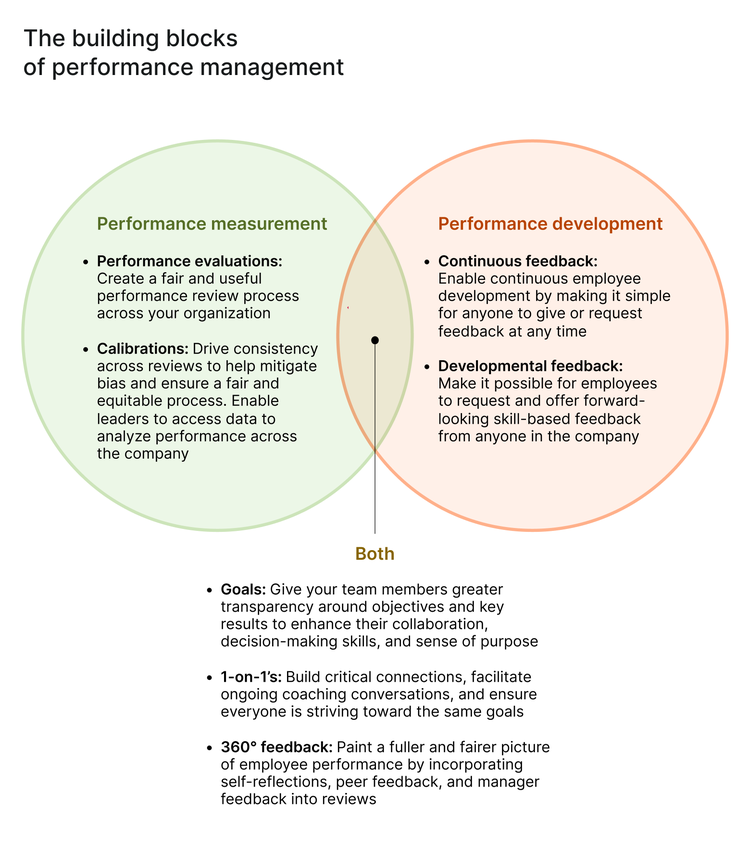
As you can see, these performance management building blocks can be incorporated into your current performance management system to develop performance, measure performance against performance expectations, or both. By picking and prioritizing the pieces you want to add to your existing system, you can make meaningful changes to your process over time.
For example, if your priority is enabling continuous employee development, start by looking for systems and solutions that make it easy for people to give and receive feedback at any time.
Using these building blocks, you can slowly but steadily move from traditional performance management (i.e., the annual performance review) to an agile performance management cycle.
Agile performance management (often called continuous performance management) is informed by ongoing, peer-based feedback and multiple informal touchpoints – as a result, the content of a formal review should never come as a surprise. The following chart further compares traditional and agile performance management.
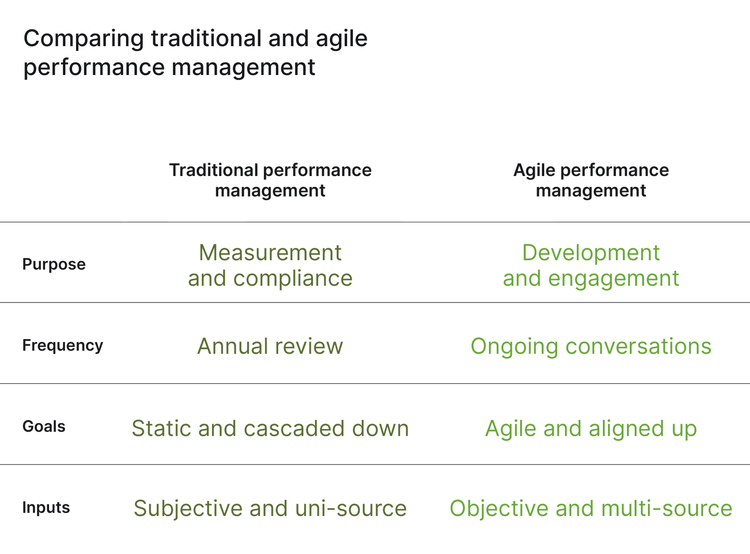
Pillars of effective performance management
When it comes to developing a growth-focused and effective performance management process, there are four pillars, or principles, to keep at the forefront:
- Fairness, transparency, and accuracy
- Goal alignment and tracking
- Accountability and recognition
- Developmental coaching and feedback
These pillars are foundational to the performance management process and without them, your business will never achieve its long-term goals. As you read on, you’ll notice that you can deliver on these principles by incorporating key performance management building blocks into your performance management process.
1. Ensuring fairness, transparency, and accuracy in performance appraisals
For your employees to respect the outcomes of your performance management system, they need to understand how it works. Unfortunately, most employees view performance management as unfair and dread performance reviews. But when done right, performance reviews can be a powerful tool for boosting engagement, raising morale, and elevating the overall employee experience.
To win employee buy-in, start by listening to your employees to understand why they perceive the process as unfair, then work to address these concerns. For example, educate your workforce on common performance review biases and clearly and publicly share your performance review process, including key dates and timelines.
2. Aligning employee goals with organizational objectives for performance success
Having a slate of collaborative and clearly stated goals is essential for high performance and employee engagement. After all, employees cannot perform well until they know what’s expected of them.
Goals help to clarify expectations, but not all goals are created equal. Effective employee performance goals drive agency, ownership, and engagement. On the flip side, vague, ineffective, unmeasurable, and misaligned goals can do more harm than good by confusing or even demotivating employees. Two of our favorite goal setting frameworks at Culture Amp are:
- SMART goals. The SMART acronym stands for specific, measurable, attainable, realistic, and time-bound. By setting goals that are SMART, you can ensure clarity of expectations, ownership, and purpose.
- Objectives and key results (OKRs). OKRs start with a high-level objective. Then, 2-3 key results are listed to evaluate how successful a business, team, or individual was at achieving the objective.
For both frameworks, the individual goals should cascade up to team and company goals. By creating this critical alignment, goal setting can boost motivation and enable employees to understand how their work connects to your business’ larger strategy. It can also give them the autonomy and direction they need to quickly adapt and make business-critical decisions, even in times of rapid change.
Just remember, setting goals should be a collaborative process. While managers should help their direct reports set goals that align with business priorities, direct reports should be empowered to articulate performance expectations and professional development goals of their own.
Additional resources
3. Encouraging accountability and providing recognition to boost employee performance
An effective performance management system holds people accountable for their actions while also recognizing great work. Unfortunately, Culture Amp's 2024 benchmark found that only 50% of employees agreed or strongly agreed that “When it is clear that someone is not delivering in their role, [Company] does something about it.”
In other words, almost half of all employees feel like performance – both good and bad – isn’t being handled properly at their organizations. This could also indicate that employees feel disincentivized to improve performance because they believe their organization isn’t properly recognizing high-performers and identifying low-performers.
So, how can your business build accountability and recognition into your performance management system? The answer has two parts:
-
Take action when it is clear that someone is not delivering in their role.
It’s important for HR leaders to send a clear sign to employees that the business takes action to identify and quickly address performance issues within your organization. This could involve creating a performance improvement plan (PIP) or shuffling a struggling employee’s job responsibilities to better suit their strengths. -
Show your appreciation for employees’ hard work.
Regular recognition is key to motivating your teams to continue doing their best work. You can do this by awarding promotions, raises, bonuses, and giving high performers the opportunity to take on additional responsibilities.
Holding your low-performing talent accountable and rewarding your top-performing talent when they’ve gone above and beyond is a delicate balance. Tipping the scales in one direction or the other can negatively impact employee morale and motivation.
4. Using coaching and feedback for employee development and professional growth
As discussed above, performance development must be a part of your performance management system. You want to inspire employees and equip them with the skills, knowledge, and abilities they need to grow their careers and succeed in their current and future roles. Moreover, developing employee skills and career interests can be a powerful and effective way to improve talent loyalty and retention.
Here’s how to incorporate developmental coaching and ongoing feedback into your process:
- Create a culture of continuous feedback by incorporating these conversations into weekly or bi-weekly 1-on-1s.
- Help managers develop coaching skills using tools like Skills Coach.
- Educate employees on how to deliver constructive feedback to their peers, teammates, and even leaders.

Make performance reviews fair and objective
How to craft a fair and transparent performance review process
Although an agile approach to performance management is essential for fostering a culture of continuous feedback and growth, traditional performance reviews are still an integral part of any strategy.
That said, performance reviews aren’t and shouldn’t be thought of as an administrative burden or waste of time. Instead, approach (and communicate) them as a valuable opportunity to set clear expectations, help your employees grow, and reward accomplishments – all of which can be made easier with the right performance review solution.
Here are five best practices to keep in mind when you prepare to hold your next performance review.
1. Clearly communicate the value of performance reviews
Employees need to understand and believe in the value and accuracy of performance reviews for the process to be successful. Leaders should clearly communicate how a performance evaluation is a tool meant to help them succeed – not a scale to judge their successes or failures.
Encourage managers to let their direct reports know that the performance review is meant to be a candid, mutually supportive, and productive check-in. These conversations are a way to prevent misunderstandings and help employees pause, step back, reflect on, and recalibrate accomplishments, workload, performance expectations, and priorities. Communication also means using better phrasing and asking the right questions during the performance review to get the right results.
2. Use the right rating scale
Measuring performance is perhaps the most important part of traditional employee performance reviews. As an organization, you need to be able to make data-informed decisions when it comes to career development. Without a universal way to gather structured data, you’re more at risk of potential inaccuracies and biases. Even though a performance evaluation can cause some anxiety, employees ultimately want to understand how they’re doing and what’s expected of them, so getting the rating scale right is of utmost importance.
At Culture Amp, we recommend a four-point rating scale. Here’s a closer look at the scale:
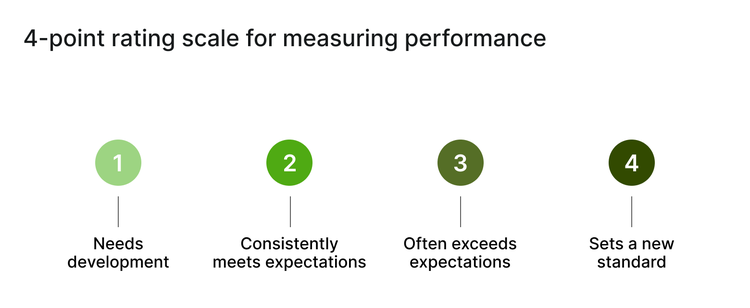
- Needs development. Does not consistently meet expectations that are appropriate for the position. Additional direction and support are needed. Willing or able to improve but lacks results required for the role.
- Consistently meets expectations. Consistently meets expectations and sometimes exceeds expectations. Achieves a majority of core goals for the role.
- Often exceeds expectations. Regularly exceeds expectations. Requires little to no additional direction to achieve the core goals of the role.
- Sets a new standard. Consistently exceeds expectations and delivers to the goals of the position, or consistently delivers beyond the goals of the role. Influences others to perform better.
This four-point scale is a great way to combat centrality bias (when managers provide an “average” rating across direct reports). It compels managers to make a clear choice when rating an employee’s performance and to identify meaningful differences that exist between employees.
3. Conduct a 360° performance review
360° performance reviews use feedback from multiple sources to assess an individual, rather than just their manager. There are usually three types of feedback in a 360° performance review, which are given in the following order:
-
Self-assessment
Self-assessments, also known as self-reflections, ask your employees to reflect on and evaluate their own performance. Self-reflections allow a direct report’s voice to be heard during the performance process and can greatly improve their perception of fairness. They can also act as a temperature check for managers, empowering them to identify discrepancies between the manager's and the direct report's perspectives. -
Peer feedback
Peer feedback is collected from an individual’s colleagues within the organization. After finishing their self-reflections, employees should nominate 2-4 team members or cross-functional peers to give them feedback. Ideally, these are individuals the employee works with directly or indirectly every day who can provide insight into the quality of work, collaboration style, leadership skills, and more.
By incorporating the voices of an employee’s colleagues, managers and leaders can get a fuller picture of that employee’s contributions. -
Manager feedback
In traditional approaches to performance management, manager feedback is often the only type of feedback taken into account. In a 360° review process, managers are actually the last to give feedback.
In this process, managers take insights from their direct report’s self-reflection and peer feedback to give a more objective and holistic summary of their overall performance.
While there are many benefits of 360° feedback, the most obvious one is that it involves a variety of diverse perspectives on an employee’s performance, instead of just their manager’s. By combining manager feedback with self-reviews and peer feedback, businesses are able to get a more informed view of their employees’ work and build a performance management system that promotes growth over measurement.
4. Hold performance review calibration sessions
Performance review calibration is a process that aims to make reviews fair and consistent across managers, departments, and even job levels. Running calibrations can help improve the accountability of your reviews and ensure every employee receives fair feedback.
Say one manager on your team is more laid-back. If they believe their employee has completed every one of their tasks for the year successfully, they might rank them a “4 out of 4” on the next performance review. Now, say another manager in the same department is a bit more strict. She might recognize that her direct report also completed every one of their tasks successfully, but she noticed that the employee did not go above and beyond in their role this year. Come review time, this manager might award her report a “3 out of 4” since they met but did not exceed expectations. Put another way, two individuals with nearly identical performance could receive two very different scores.
In calibration conversations, every manager on your team comes together to discuss their ratings and the specific criteria they used to rank their employees. In these conversations, Manager A and B can align on what constitutes a “3” versus a “4” to ensure that both of their direct reports are appropriately ranked and rewarded. This creates a more equitable and fair review process by establishing specific guidelines so that one employee’s chance of receiving a raise or promotion isn’t affected by their manager’s subjective interpretation of the rating scale.

Make your assessments fair and objective
5. Train your managers
Performance management is arguably one of a manager's most important functions. Managers are responsible for holding one-on-one meetings that support continuous growth, helping their direct reports set aligned and attainable goals, and regularly communicating about a direct report’s progress. Not least of all, managers deliver performance reviews and advocate for promotion opportunities and compensation raises.
That’s why your managers must be set up to deliver fair and effective performance reviews to their direct reports. This is especially true for first-time managers, who have only ever received performance reviews as an individual contributor. To this end, HR leaders must ensure that every manager understands the company’s approach to performance, their responsibilities as part of the process, and key timelines and dates. Leaders should also help new managers become aware of their biases before conducting any performance reviews. Diversity, equity, and inclusion (DEI) doesn't exist in a vacuum, and managers should be trained on these concepts so they can deliver fairer, more equitable performance reviews.
Additional resources
Elevate your approach to performance
Get a step-by-step guide to implementing a new performance management system
Best practices for building a high-performance culture with performance management
Implement the above tasks well, and you’ll have a solid foundation for improving employee performance. That said, collecting data and finding the right performance management software can go a long way in helping you create a more scalable and engaging performance process.
Leverage data
Data empowers organizations to drill down to the core of performance-related challenges and implement more targeted solutions. For example, PwC Australia noticed an increase in attrition among its Senior Consultants. Using feedback from their employee engagement surveys, PwC was able to identify trends in responses between higher-performing and lower-performing Senior Consultants and use this to help improve the experience of these employees.
Beyond employee engagement data, you can also connect data from the following sources to surface valuable insights:
- Demographic survey data. Asking questions about demographics is an important way to understand how the employee experience and performance differ between individuals of different backgrounds and personal identities.
- Onboarding survey data. InVision was able to use onboarding data to predict future employee performance.
How other companies are building a culture of high performance
- Tipsheet: Goal setting for agile teams
- How to set goals for remote and hybrid teams
- A framework for employee performance goals (with examples)
Use a solution specifically designed for performance management
AA 2019 Deloitte study found that performance management has an employee net promoter score of -60 NPS. Why such poor employee approval? Well, poorly designed and difficult-to-use systems tend to frustrate employees.
For instance, many companies still use a human resources information system (HRIS) as their performance tool, despite the many limitations that emerge from its lack of integrations, analytics, and reporting capabilities. While an HRIS is great for data management, these platforms are missing many components needed for user-friendly and insightful performance management.
Organizations looking to build a culture of high performance should instead opt for a performance management software solution. These systems prioritize user experience and make it simple to track goals, share feedback, hold 1-on-1s, conduct performance reviews, and much more.
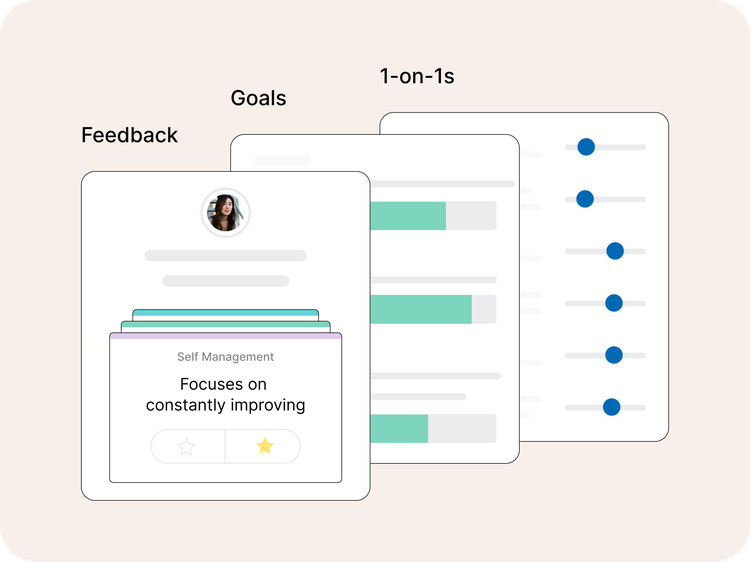
The right performance management tool doesn’t just boost employee review participation rates; it can also give your business powerful insights into the state of individual, team, and organizational performance.
Invest in your workforce to improve employee performance
If there’s one thing you take away from this guide, we hope it’s that performance reviews aren’t the be-all and end-all of performance management. While reviews are certainly important, ongoing performance management can have a much bigger impact on individual employees and the company as a whole. That’s why connecting the dots between employee performance and engagement is so crucial. Investing in an employee experience platform can help your organization create, maintain, and iterate on your performance management process and adopt a growth mindset.

Transform your performance management system with Culture Amp
Robust performance management tools, like goal tracking and 1-on-1s, make it easier to build high-performing teams and invest in employee growth.


